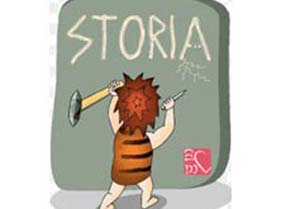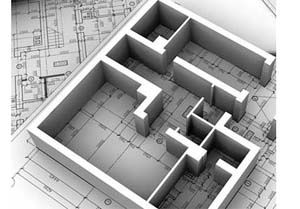 |
|
 |
|
| Visite: 1691 | Gradito: |
Leggi anche appunti:America meridionaleAMERICA MERIDIONALE Era abitato da: CREOLI (i primi conquistatori), StoriaSTORIA á Interessi economici e culturali, l'aviditÓ per l'oro e i metalli La rivoluzione franceseLa rivoluzione francese La rivoluzione francese scoppiata nel 1789 affondava |
 |
 |
THE BATTLE OF MONTECASSINO
After the Axis retreat and allied
victory on the island of Sicily, it was only a matter of time before the Allies
carried out a landing on the mainland of Italy, the 'soft underbelly of
Europe'. This they did on the toe of Italy, when the British 8th Army
landed at Reggio on the 3rd September and Taranto on the 9th. Both of these
landings were uncontested by the Germans as they had pulled out of the area
some time before.
The US 5th Army then landed on the west coast further north at Salerno on
September 9th 1943 to coincide with the Italian armistice. This move was
predicted by the commander of German forces in Italy, Field Marshall
Kesselring. In expectation of a landing at Salerno the 16th Panzer Division was
moved to the area to meet the invasion. The German 10th Army was then mobilized
behind the 16th Panzer to help drive the Allied invasion force back into the
sea.
The Gustav Line
Less than a kilometre west of Cassino town stood Monte Cassino
towering 1700 ft above the town below.
On top of Monte Cassino stood the centuries old Benedictine Monastery, the
scene of many battles over the centuries. Monte Cassino became the hub of the
German Gustav line, situated 100 miles south east of Rome. Cassino town was
first bombed on the 10th September when targets all along the Garigliano river
were hit. It caused heavy casualties amongst the civilian population, many took
refuge in the monastery at Monte Cassino. The 14th Panzer Corps couldn't live
up to their title, they were desperately short of tanks and had to rely mainly
on infantry, amongst their ranks men of the 1st Parachute Division who had been
moved from the Adriatic sector held by LI Gebirgs Korps.
By the time the 5th Army Group had resumed their advance, the Germans had
firmly dug themselves in on the Gustav defensive line in expectation of the
allied offensive.
Facing the Cassino front the allies now had seven Commonwealth divisions,
containing men from India, New Zealand, South Africa (who had an
armoured division in reserve) & Brazil, also five American, five
British, four French and three Polish Divisions. A formidable force.
The Allied governments accused the
Germans of using the Monastery as a strong point, which they strongly denied,
although they were dug in on the slopes of the monastery. The Germans had
encompassed Monte Cassino into their defence line so the allies, although
reluctant to do so, agreed that in the near future it would probably have to be
 bombed.
bombed.
It was Oberst Schlegel of the Hermann Goering Panzer Division who was
responsible for getting all the treasures and works of art within the
Monastery, out of harms way before they could be destroyed. They were removed
in October to a safer location in the north before being handed over to the
Italian government.
The First Battle
The first allied assault on the
Gustav line came on the 17th January 1944 to coincide with the landings at
Anzio, planned for the 22nd.Both the British and the French had limited
success, they never managed to complete the flanking manoeuvre. They met heavy
resistance and all they could do was dig in around the hills and mountains
behind Montecassino.
The American 36th Division spent a couple of days preparing for their assault.
Boats were bought up to the front to carry the men across the River. They were
supported by artillery who bought shells down on the German defenders. Some
elements of the 36th reached the other side of the river and attacked German
positions.
The Americans on the German side found themselves surrounded.
The order to pull back was given on the 22nd , not before the 36th had suffered
heavy casualties.
They had been unable to penetrate the excellent German defences.
The Second Battle
The next assault on the Cassino
front was planned for the 15th February. On the 14th, leaflets were dropped
onto the monastery telling the occupants and refugees that the allies had
decided to bomb Monte Cassino. On the 15th the bombing began in earnest. It was
the first time that heavy bombers had been used in the support of infantry and
the first time that bombers from England had attacked an Italian target. The
monastery was pulverized, its architecture destroyed and left in ruins; there
was uproar from all round the world at the destruction of this holy bastion.
After the bombing ceased, the infantry attack began. Positions around the
monastery and surrounding hills were defended by men of the 90th Panzer
Grenadier.The 1st Parachute Division's machine gun Battalion took up positions
on the hill itself.
The New Zealanders assault was met with fierce tank and artillery fire, which
forced the Kiwis back across the Rapido River, suffering heavy casualties in
the process.
Indian troops attempted to assault Calvary Hill, which was being held by the
3rd Battalion, 3rd Parachute Regiment, but were almost decimated in the
process. The assault was called off on the 19th February.
The Third Battle
Then on the morning of 15th March in
fine weather, another bombardment began.
General Heidrich was at 3rd Regiment HQ when the bombardment began. He
concentrated his own artillery and mortar fire on Kiwi positions in the town,
which also helped to stall the New Zealanders.
The monastery was again bombed but the defenders remained un-scathed in their
underground bunkers.
On the 19th March the Allied high command ordered another push to take German
strong points in the town and a frontal assault on Monte Cassino from Hangmans
Hill by the Ghurkas who would be reinforced by men from Castle Hill, who in
turn were to be relieved by Indian troops
By the afternoon of the 19th the frontal assault was called off.
Most of Cassino town was now in the
hands of the Kiwi's, reinforcements had managed to get through to the
beleaguered defenders of Castle Hill overlooking the town.
On the 23rd March the allied attack was called off. Nearly 3000 men had been
lost since the 15th March.
The Fourth Battle
Late in the evening of the 11th May
1944 the opening barrage of 2000 allied artillery pieces caught the German
Paras totally by surprise.
The French Expeditionary Force had successfully advanced up the Liri Valley,
battling with German defenders on the way.
The US 2nd Corps advancing northwards up the coast towards Anzio were supported
by allied warships, which pounded German positions.
The Germans were barely holding on to the Gustav line, it had been penetrated
and the German positions were being bypassed.
As allied forces were penetrating the Gustav line backed up by a Canadian
Army Corps, (a unit unknown to the Germans), the order came from Field
Marshall Kesselring, commander Army Group C, to withdrawal from positions in
Cassino town, the monastery and surrounding hills and mountains. The allies had
made the mistake of not cutting Route 6, the main highway linking the south to
Rome, allowing thousands of German troops to escape northwards.
The town of Cassino finally fell on the 17th May.
 Only the wounded remained at Monte
Cassino under Hauptmann Herbert Karl Beyer (commander I/FJR4), himself
seriously wounded. The Poles entered the monastery early on the 18th May, where
they proudly raised their flag over the ruins where so many of their men had
sacrificed their lives. Nearly 1000 Poles were killed and 3000 wounded in the
assaults on Montecassino.
Only the wounded remained at Monte
Cassino under Hauptmann Herbert Karl Beyer (commander I/FJR4), himself
seriously wounded. The Poles entered the monastery early on the 18th May, where
they proudly raised their flag over the ruins where so many of their men had
sacrificed their lives. Nearly 1000 Poles were killed and 3000 wounded in the
assaults on Montecassino.
Altogether the Germans had lost 20 000 men in the defence of the Gustav line.
During the
German retreat they destroyed bridges, laid mines on roads and prepared ambushes,
all designed to delay the advancing Allied forces.
On the 23rd May, the US 6th Corps broke out of the beachead at Anzio and on the
25th May linked up with the US 2nd Corps. The German 14th Army at Anzio and the
10th Army withdrawing from their defensive positions were partially
encircled by this joint US force as they moved north, but avoided encirclement
when it was decided that the Americans would head for Rome, which they then
entered on the 4th June 1944. The German forces slipped past the outskirts of
Rome the same time the Allies entered.
 |
| Appunti su: |
|
| Appunti Astronomia cosmologia |  |
| Tesine Architettura |  |
| Lezioni Aeronautica |  |